Since my WnW E.I is temporarily on hold due to issues with the decal end of the project, I thought I'd use the down-time to jump to the other end of the Eindecker spectrum and start the Mikro Mir 1:32 E.V/D.VIII kit, which I recently got from UA-Hobby in Kyiv. I've always wanted to build this type, primarily because a) I've loved them for about sixty years (I was never able to find the Aurora kit when I was a kid, more's the pity), and b) I was fascinated by the challenge of capturing the uneven surface of the ply-covered wing. I've been mulling over ways to replicate that wavy effect in plastic for decades:
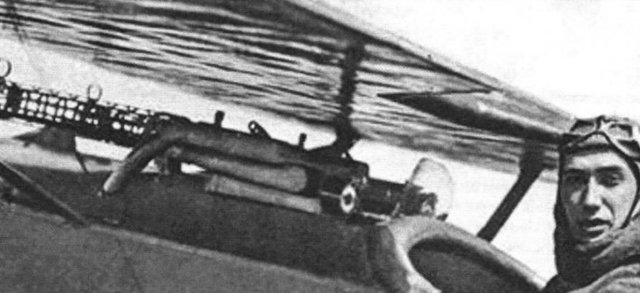

I spent a week or two researching Fokker construction techniques (Achim Engel's two books on his D.VIII reproductions were invaluable resources), and started by glueing the wing halves together and filling the oversized (and incorrectly placed) panel lines with stretched sprue laid down with liquid cement, then sanding them flush:
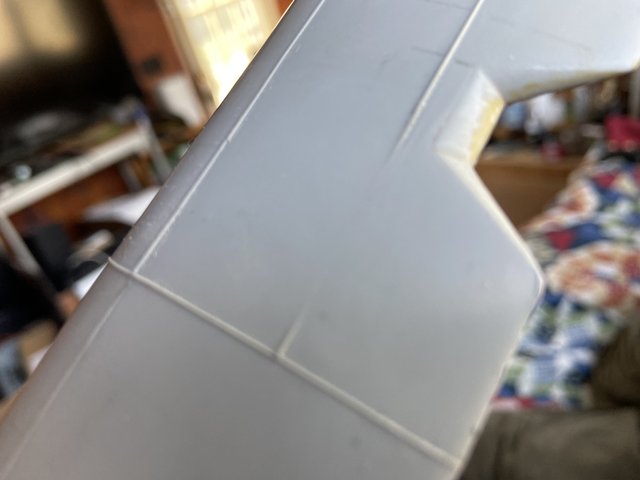
Starting on the underside, I brushed on a quick primer coat of Floquil/Poly Scale "Mud" (no particular reason, it just happened to be handy), and after figuring out the actual panel lines using photos from the Engels books as reference, used a plan of the sub-structure from Datafile 25 as a guide to draw the spars and ribs on with pencil, and the panel joints with a .005 Pigma Micron:
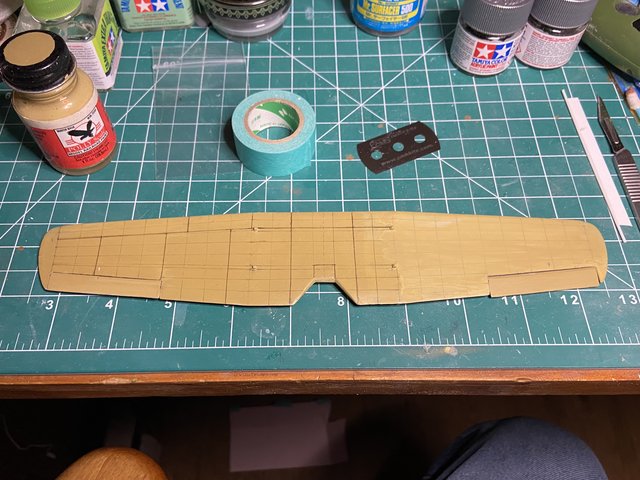
That done, I re-scribed the panels, then began trying various methods of making shallow depressions in the surface. First I tried using a rotary tool with a pointed felt tip and jeweler's rouge, then a blunt toothpick dipped in abrasive compound, then a shaped coffee-stirer with padded sandpaper super-glued to it... but none of them really worked. Finally I began lightly scraping "dips" where the plywood was unsupported using the rounded edge of a No. 15 scalpel blade (the areas on the left in the photo below):

That worked, but despite my lightest touch it still left tiny but visible gouges in the styrene. So I ended up wet-sanding all 164 divots with 320- and then 400-grit sanding film (beginning with the center section above the wing cutout in the photo above).
It took hours, but I'm fairly happy with the results; the mirror-smooth surface of the plastic has been broken up into a subtle but highly realistic pattern of high- and low-spots that mimic the underlying ribs and spars:
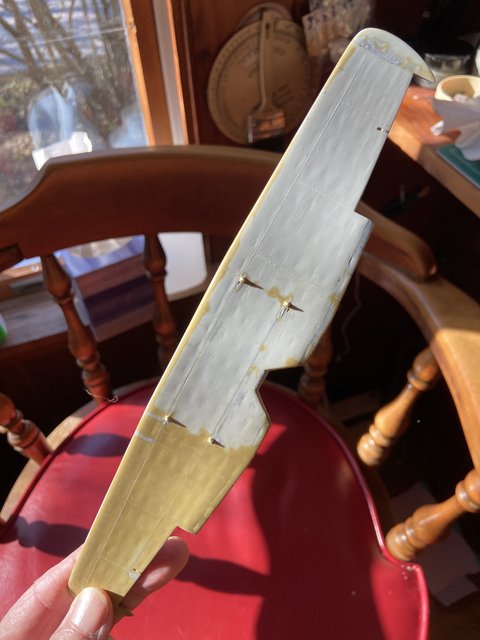
[/url]
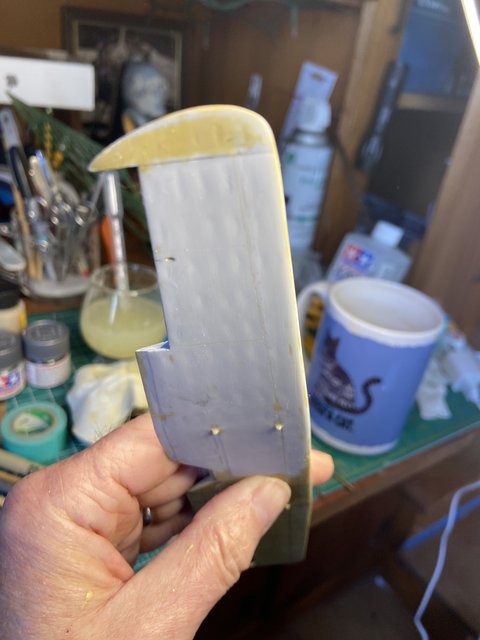
The effect isn't quite as pronounced as that oblique lighting makes it appear, but it gets the effect across...
I'm planning on finishing the model as one of the aircraft flown by either Stefan Stec or Stefan Bastyr during the Polish-Ukrainian war in 1918-19. Since this is most likely going to be another long-term undertaking I probably won't do a full-blown build log, but I had a lot of fun with this part and thought it might be worth sharing.
Now that I have the technique figured out all I have to do is repeat the whole process on the upper side of the wing...
All best,
Dutch